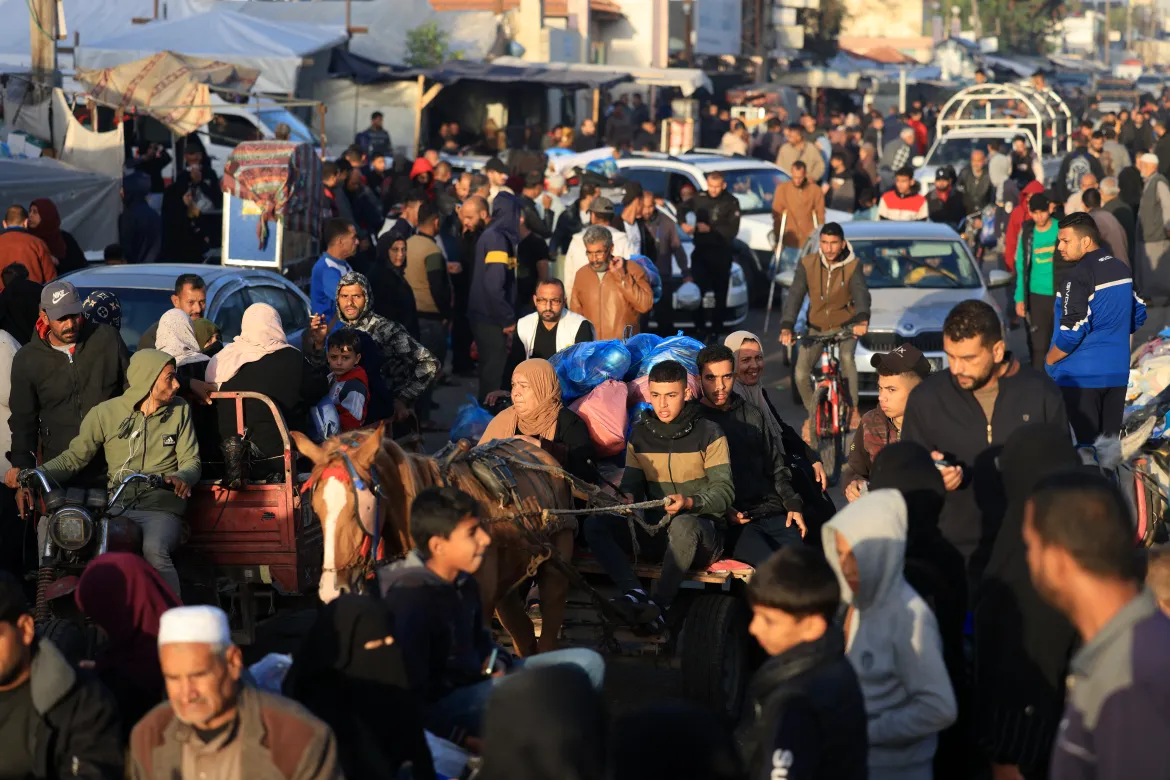The return of over 300,000 Palestinians to northern Gaza has marked a heartbreaking chapter in the ongoing humanitarian crisis engulfing the region.
These families, who fled the escalating violence to seek refuge in the south, now face the devastation of their homeland upon return. Their stories are a grim reflection of the conflict that has wreaked havoc on lives and infrastructure, leaving behind a trail of destruction and despair.
The Return to Northern Gaza
After 16 months of waiting, a staggering number of displaced Palestinians began their journey back to northern Gaza. Driven by the hope of reclaiming their homes, they were met with scenes of utter devastation.
Entire neighborhoods have been reduced to rubble, leaving many with nothing to return to but the fragments of their former lives. The Gaza Government Media Office confirmed that more than 300,000 individuals have crossed back into the north, but their plight is far from over.
Read : 19-Year-Old Palestinian Man Stabbed Israeli Man on Levontin Street: Shot Dead By Civilian
Al Jazeera’s correspondent in Gaza has reported harrowing accounts from returnees. Families are struggling to find habitable shelter among the ruins, while essential services such as water, electricity, and healthcare remain virtually non-existent.
Read : Saudi Arabia Removes Palestine from School Textbook Maps
The United Nations has raised alarms, stating that the “needs on the ground remain immense,” highlighting the dire circumstances faced by the population.
Escalating Repression in the West Bank
While the situation in Gaza draws global attention, the repression of Palestinians in the occupied West Bank continues to escalate. According to UN special rapporteurs and independent experts, Israel’s policies and actions in the region show no signs of abating.
This includes restrictions on movement, demolition of homes, and other forms of systemic control that further exacerbate the plight of Palestinians.

The broader implications of this repression extend beyond the immediate suffering of individuals. The international community has repeatedly called for a resolution to the decades-long conflict, yet meaningful progress remains elusive. The ongoing violence and oppression only serve to deepen divisions and fuel further instability in the region.
The Toll of the Conflict
The human cost of the conflict is staggering. Since October 7, 2023, at least 47,317 Palestinians have lost their lives, and 111,494 have been wounded.
These figures, provided by Gaza’s health authorities, underscore the devastating impact of the war on Gaza. On the Israeli side, at least 1,139 individuals were killed during the Hamas-led attacks on October 7, with more than 200 people taken captive.
The sheer scale of the destruction in Gaza has left an indelible mark on the region’s social fabric. Families have been torn apart, communities have been decimated, and the basic infrastructure needed for daily life has been obliterated.

For those returning to northern Gaza, the challenges of rebuilding their lives are compounded by the lack of international support and the ongoing blockade that restricts the flow of essential goods and resources.
The return of over 300,000 Palestinians to northern Gaza is a testament to their resilience and determination to rebuild their lives despite unimaginable odds. However, the road ahead is fraught with challenges.
The international community must urgently address the humanitarian crisis in Gaza and work toward a sustainable resolution to the conflict. Without immediate intervention, the cycle of violence and suffering is likely to persist, with devastating consequences for all involved.
This tragedy serves as a stark reminder of the urgent need for peace and reconciliation in one of the world’s most enduring conflicts. Only through dialogue, mutual understanding, and a commitment to justice can a brighter future be envisioned for the people of Gaza and the wider region.

